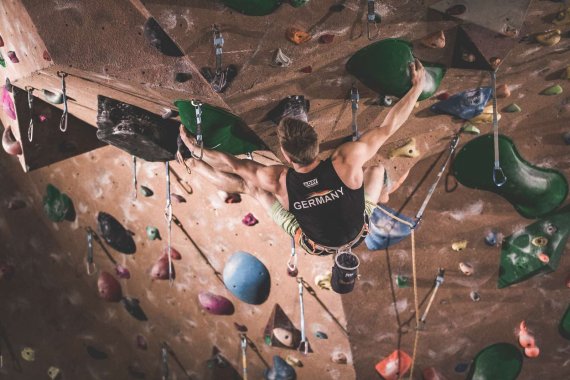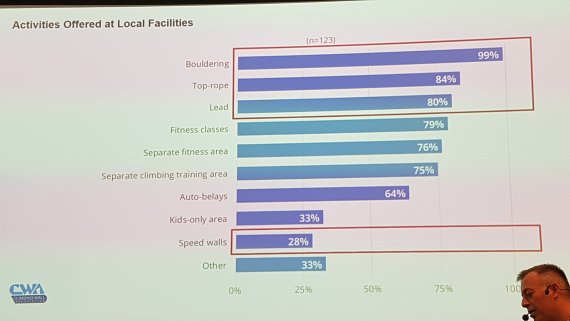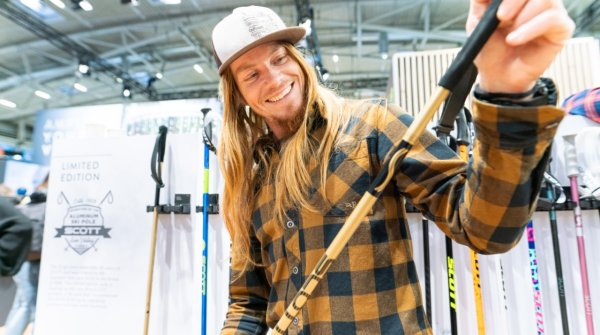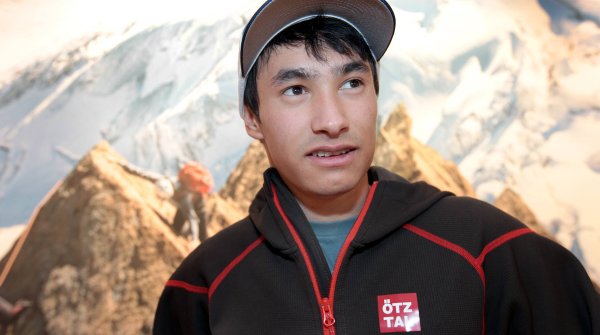
Climbing is an established trend sport which is practiced by at least 500,000 people in Germany alone. The strong growth of the original outdoor sport in recent years has been driven primarily by indoor climbing gmys and walls - in Germany there are now around 500.
Olivier Aubel from the Sports Science Institute of the University of Lausanne, presented worldwide figures on the increasingly popular sport and its international marketing at the premiere of the Indoor Climbing Hub at ISPO Munich 2019. The growth potential of the outdoor sports could therefore lie in new formats in regions ever further away from the mountains. ISPO.com has summarized its findings in five theses and trends about the future of climbing.

Indoor climbing is a trend sport - the figures compiled by Aubel from the most important global markets undoubtedly prove this. In the USA, the number of newly opened climbing walls rose between 6 and 13 percent each year between 2010 and 2017. In France, they rose between 6 and 24 percent per annum in the same period. But the biggest boom is in Germany, where the number rose each year by between 10 and 27 percent.
"Germany is the most dynamic market, but growth will continue worldwide in the coming years. There are still many white spots when it comes to climbing. And the trend is clear: The more climbing walls there are, the more people will go climbing," said Aubel.
Indoor climbing departs more and more from its origins: this applies to both space and appearance of the climbing gyms. Whereas in the past the walls in indoor climbing arenas were reproduced as naturally as possible, today many suppliers are moving further and further away from the original. Companies such as Clip N'Climb have developed space-saving, artificial climbing walls that can also be easily installed in shopping centers.
"Other derived formats that are becoming increasingly popular are Ninja Warrior or Parcours," explained Aubel. He is convinced that the greatest growth potential for indoor climbing lies in the cities far away from the mountains. "Crazy destinations such as climbing gyms in empty old factory buildings in industrial areas are the best. They attract many people who haven't had much to do with climbing so far." A precise geomarketing analysis of the existing supply and demand is important.

Worldwide, there are different business models how to design climbing gyms economically. In the USA, 74 percent of indoor climbing offers provide a mix of different activities. In addition to the climbing wall, there are usually also fitness offers and courses as in traditional studios. In France, on the other hand, 68 percent focus on bouldering.
There is also the interesting trend that climbing gyms are increasingly associated with restaurants. "This seems to be a viable business model that could endanger the traditional players in the future," said Aubel. He cited an example from Bordeaux, where the restaurant business contributed around 600,000 euros to the 800,000 euros in total turnover, making it possible to make the climbing offer economically viable. Other new business models include the above-mentioned offers from companies such as Clip N'Climb, with which climbing also reaches shopping centers, cinemas and restaurants.
Climbing will celebrate its Olympic premiere at the Tokyo Summer Games in 2020. For women and men, however, only one gold medal will be awarded for the combination of the individual disciplines bouldering, lead and speed climbing. "Olympia will undoubtedly have a big impact on the future of indoor climbing because many millions of viewers will see it on TV. Yet, it will be decisive how the show is presented," said Aubel.
The initial support of customers is essential for the economic success of climbing gyms: "Around 60 percent come to the gyms only once and then never again. Non-climbers feel insecure in the new environment, especially when they come with children. It is very important to look after the new customers intensively and to bind them, for example through loyalty programs," explained Aubel.
In addition, there is a need for more effective pricing and easier access, as Christian Popien, one of the co-organisers of the Indoor Climbing Hubs at the ISPO Munich explained: "When I go swimming with my kids, I can buy a two-hour ticket for 15 euros. When it comes to climbing, you usually only get day passes." Also the marketing strategy must change, as surveys show: According to the study, about 70 percent of all new climbers are friends, partners or family. It is precisely this target group that advertising must not only reach, but also successfully bind. Here, targeted new customer support and appropriate pricing should come into play.
- Awards
- Mountain sports
- Bike
- Fitness
- Health
- ISPO Munich
- Running
- Brands
- Sustainability
- Olympia
- OutDoor
- Promotion
- Sports Business
- Textrends
- Triathlon
- Water sports
- Winter sports
- eSports
- SportsTech
- OutDoor by ISPO
- Heroes
- Transformation
- Sport Fashion
- Urban Culture
- Challenges of a CEO
- Trade fairs
- Sports
- Find the Balance
- Product reviews
- Newsletter Exclusive Area
- Magazine






